When I was a child my family spent a week or two visiting Florida. I was probably around seven or eight. My major memory of that trip was incessant rain, but I also recalled visits to Tarpon Springs, Silver Springs, and St. Augustine. We visited Tarpon Springs a few years ago with Grace, and this trip we put Silver Springs on the agenda. St. Augustine will have to wait for another day.
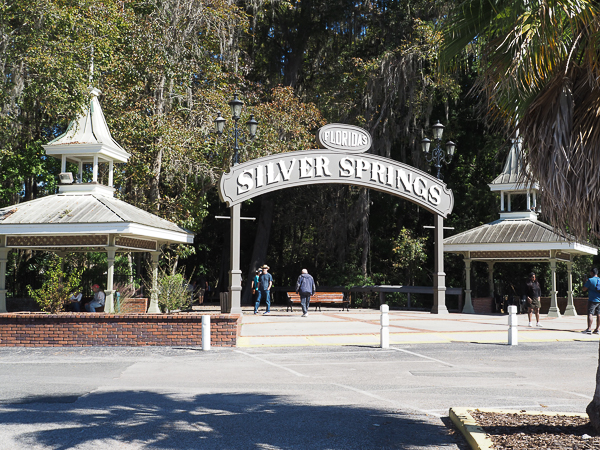
Although humans have been visiting the springs since there were humans in the area, tourism really took off in the 1950s.
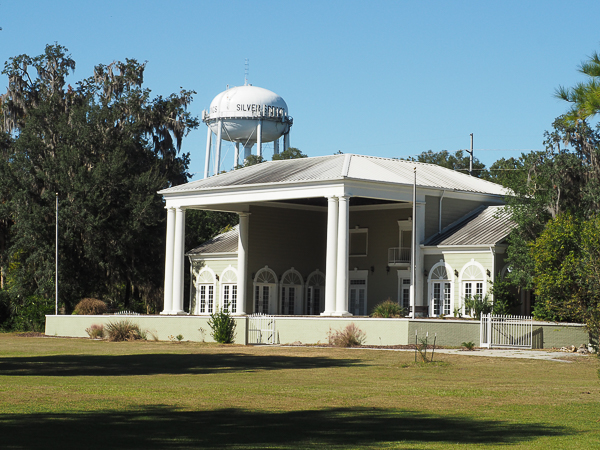
While waiting for our scheduled glass-bottomed boat tour, Ben and I walked around the park while Grace and Jim relaxed in the shade and watched the people and dogs -- including the infamous "collapsing" beagle, who insisted he was unwilling to do any more sightseeing.
The Twin Oaks "Mansion" is a popular reception venue. It may have an antebellum vibe, but it is simply a purpose-built party hall. There are two indoor rooms and the large covered stage.
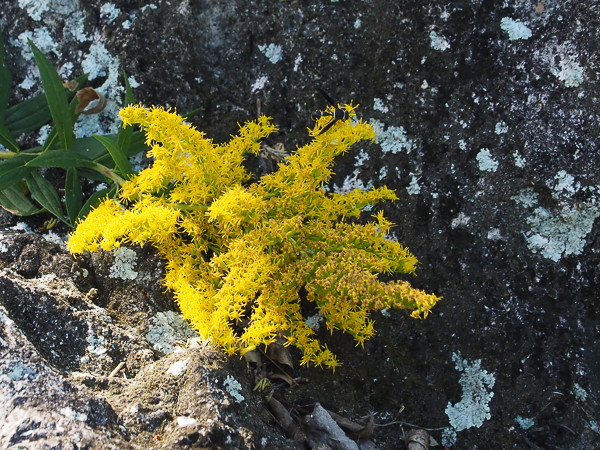
A black and white mason wasp visits one of the last goldenrods of the season. The wasp blends in with the lichen-covered rocks behind the flower head.
The north side of the rock wall had goldenrod, ferns, moss, and other greenery. The south side, exposed to the Florida sun, had only dried-up remnants of vegetation.
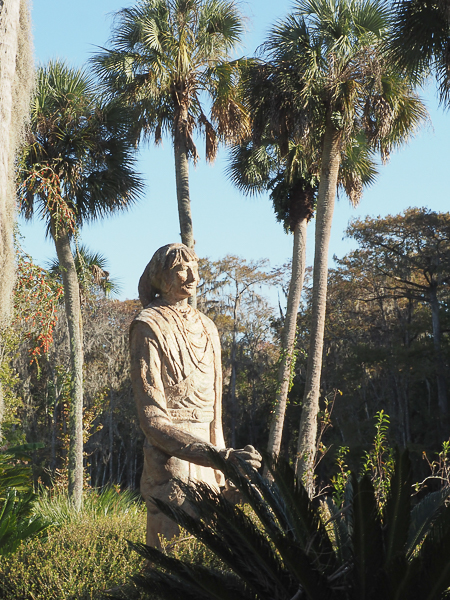
Chief Osceola, AKA Billy Powell, of what became the Seminole tribe, was famous throughout the southeast. There is a mill in faraway Rockbridge County, VA, named after him by Cyrus McCormick (of McCormick reaper fame), in 1849. The mill remained in operation until 1969 when it was converted into a residence and then an inn.
This statue commemorates an incident in which Osceola impales an unfair treaty that would have required the Seminoles to trade their Florida land for a reservation in Oklahoma Territory. His actions thereafter led to the Second Seminole War of 1835-1842. Osceola himself was captured by treachery and died in captivity in 1836, but a remnant band of "unconquered" Seminoles persist in Florida.
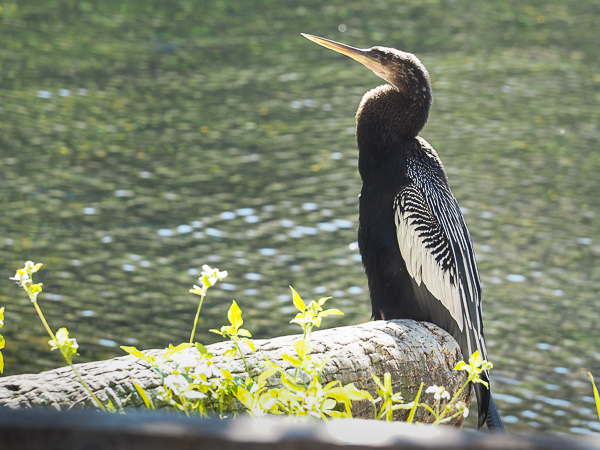
As we neared the water, this adult male anhinga posed for us. He was not worried by the presence of plenty of people and seemed quite content to soak up the sun.
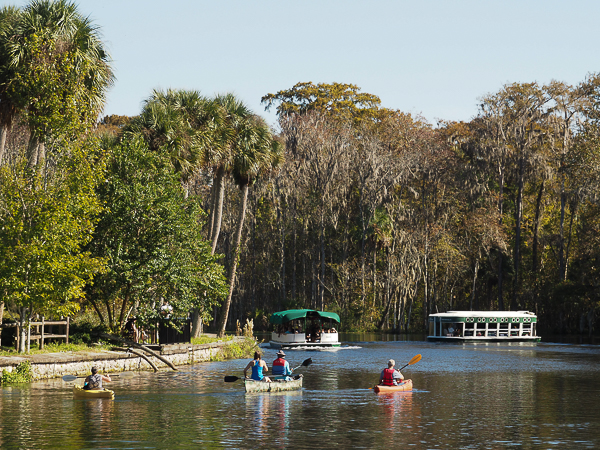
In addition to the 30 and 90 minute tours in glass bottom boats, various watercraft are available for hire to explore the lake. Jim and Grace observed two people lying on paddleboards looking into the water with snorkel masks. Your own private "glass bottom" boat.
Other folks took their dogs onto the water with them.
The paddlers were not always sensible. One almost collided with our excursion boat.
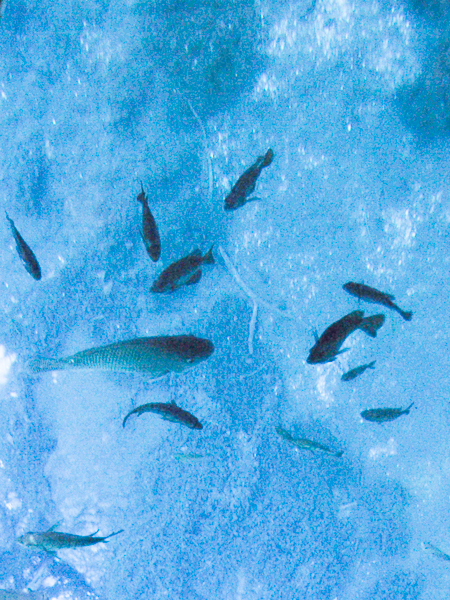
Our guide "Captain Bill" told us that the name Silver Springs came from the sun's reflection from the limestone and shell bottom of the lake. Observers thought it looked like silver, as this image shows.
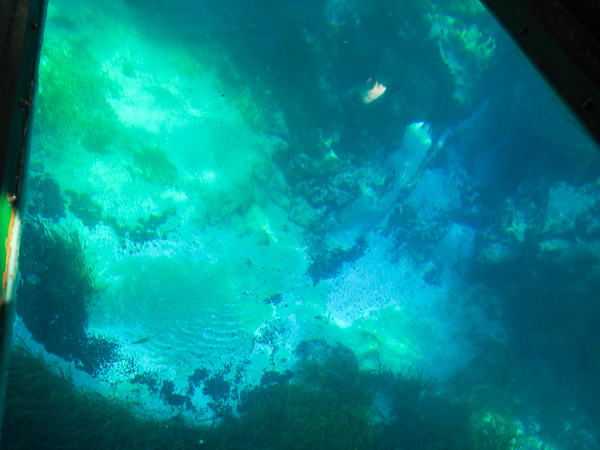
Other areas were not as crystalline.
In recent years increased nitrate infiltration of the springs has caused algal blooms that make the water murky in spots.
As the water issues from a spring mouth, it can sometimes cause ripples in the surrounding sand & shells as shown here, or it can create swirling vortices in the sediment.
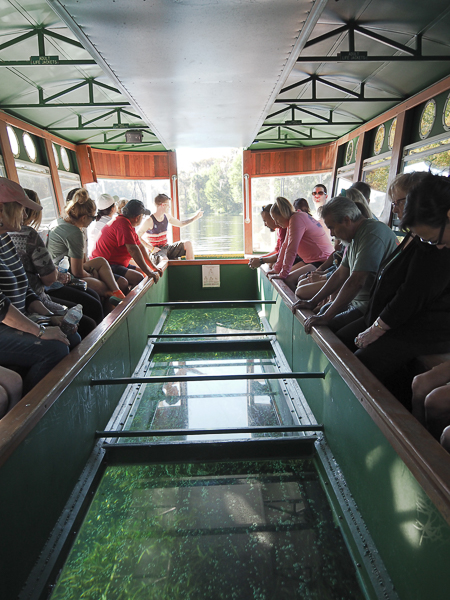
The passengers in our boat are captivated by the view.
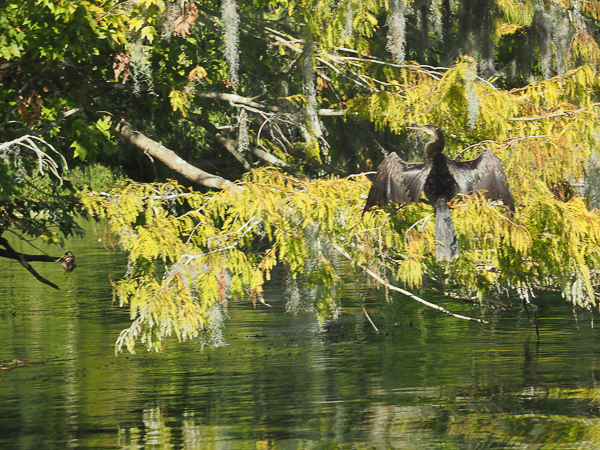
Another anhinga dries its wings in the sun.
The anhinga, which fishes by "swimming" underwater, lacks the oils that keep its feathers dry and bouyant. This is why it needs to spread its wings to dry after a dive.
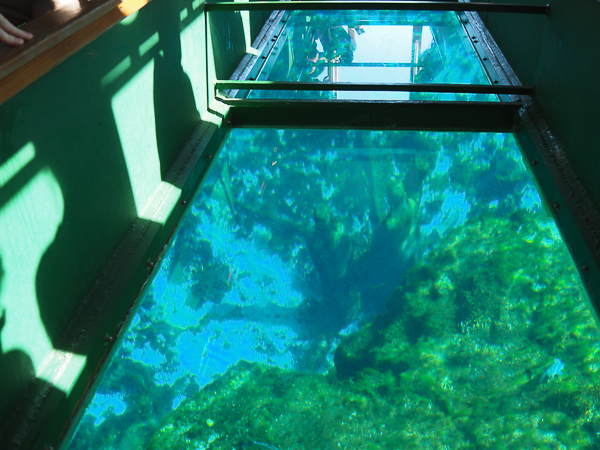
The Greek statues under the water at the main spring are leftovers from a 1960s TV show. Many movies and TV series have been shot at the springs.
At the time we visited the statues were overgrown with algae and difficult to distinguish from the surrounding vegetation. They are clearer at the link.
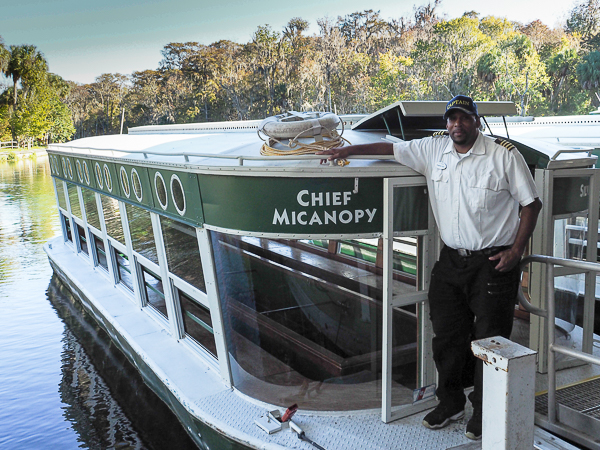
Our entertaining captain, Cap'n Bill and our tour boat.
All of the captains are certified by the Coast Guard. The Chief Micanopy, is the oldest glass bottom boat still in use at the park. Cap'n Bill said it was built in 1947. I may have ridden in it during my first visit to the park 60-plus years ago.
Chief Micanopy was an associate of Chief Osceola during the Seminole wars.
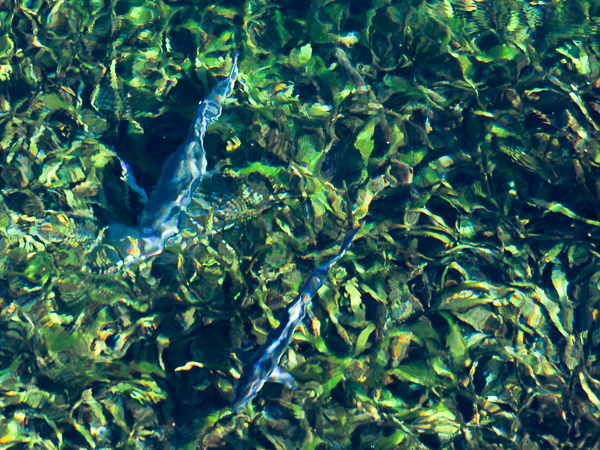
I didn't shoot these fish from the boat - they were close to the edge of the lake.
Blue tilapia from Africa and Asia are an invasive species that has displaced significant numbers of native fish at Silver Springs.

This impressive collection of cypress knees was on the way out of the park. I've never seen knees with "hats" of fibrous materials before.
No one knows the purpose of the knees.
From the boardwalk I couldn't tell if the fibrous caps were part of the knee or just gathered on top somehow.
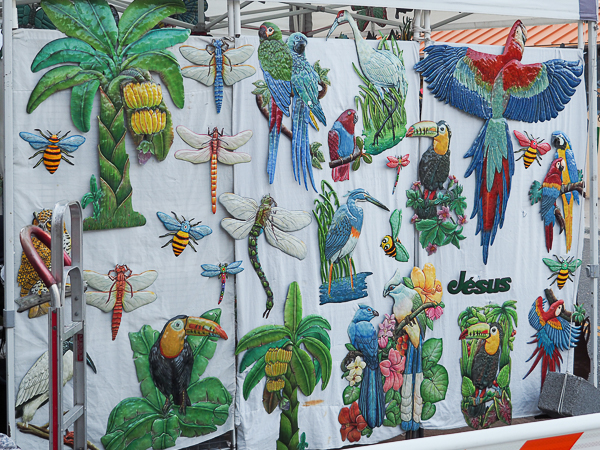
After our visit to Silver Springs, we returned to The Villages for supper. Street fair vendors were taking down their stands as we arrived.
One booth offered these painted metal repoussé designs. My paternal grandmother used to make large and small painted plaster ornaments. She had a large scarlet macaw like some shown here. I don't know what happened to it, and I was briefly tempted to purchase one of these. (They can be had cheaper online, so I may get snagged yet.) Instead I bought a small colorful octopus Christmas ornament.
Click your "back" button to return to the previous page or click for our picture album.